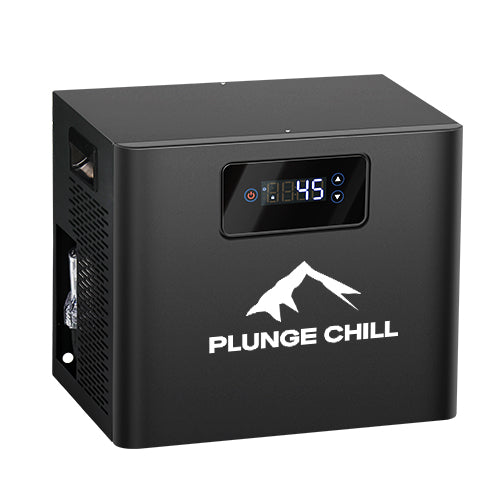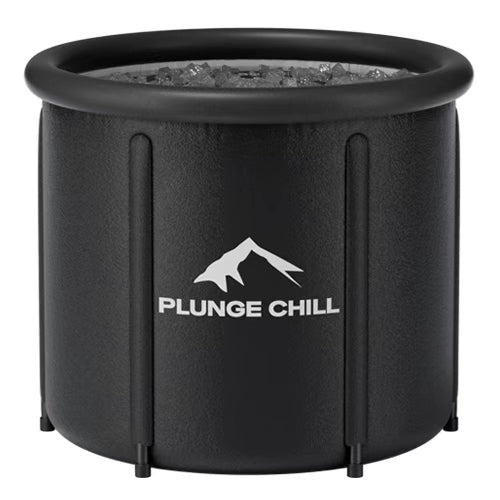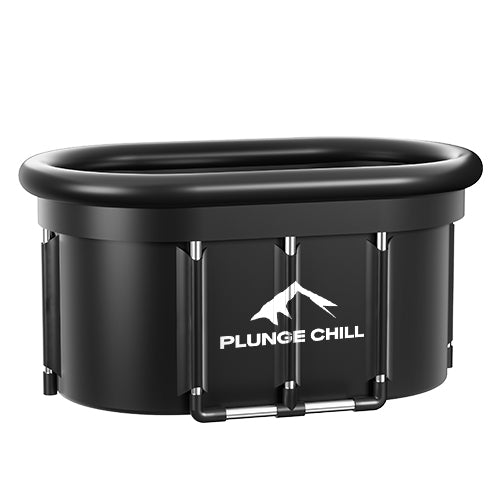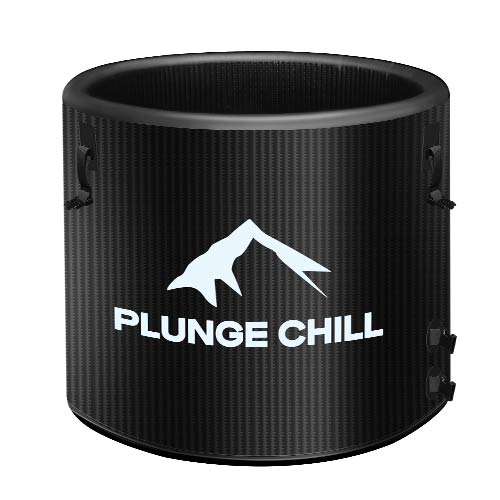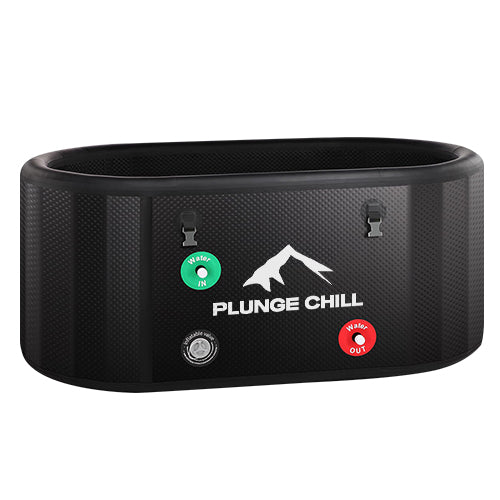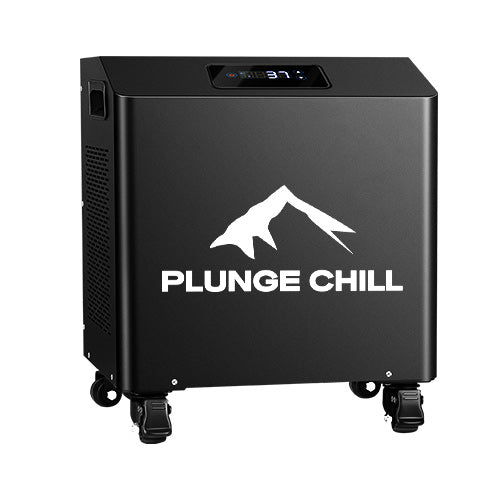You've seen them everywhere. From social media feeds packed with shivering influencers to elite athletes praising their post-game recovery, the cold plunge is having a major moment. But let's not forget the timeless, blissful appeal of a hot tub, the go-to for anyone looking to melt away stress and soothe sore muscles.
So, when it comes to your wellness, which one should you choose? The truth is, there's no single winner. It’s not about picking a side. The latest science shows that both cold and hot water therapy offer powerful, unique benefits. The real secret to upgrading your health and recovery is knowing when to use which tool for the right job. This guide will break down the science, outline the specific benefits of cold plunge and hot tub therapy, and help you decide which is perfect for your goals.

What's the Difference? Understanding the Core Principles
At their heart, cold plunges and hot tubs are two sides of the same wellness coin. They use opposite temperatures to kickstart very different, but equally useful, responses in your body. Let's simplify the science.
- Cold Water Therapy is like a strategic shock to your system. When you dip into chilly water (usually around 50-59°F), your body goes into protection mode. Your blood vessels tighten up (vasoconstriction), like squeezing a garden hose, to pull blood away from your muscles. This is fantastic for calming down swelling and inflammation after a workout. At the same time, it flips on your "fight-or-flight" switch, giving you a jolt of energy and focus.
- Hot Tub Therapy does the exact opposite. Soaking in warm water (around 100-104°F) tells your body to relax and open up. Your blood vessels expand (vasodilation), like turning the hose on full blast, sending a rush of oxygen-rich blood to your muscles to help them heal and repair. It activates your "rest-and-digest" mode, which is perfect for winding down and melting away stress.
Here’s the core comparison at a glance:
| Feature | Cold Plunge | Hot Tub |
| Immediate Feeling | An invigorating jolt | Soothing relaxation |
| Blood Flow | Squeezes vessels (less flow) | Opens vessels (more flow) |
| Main Goal | Reduce inflammation, boost energy | Increase circulation, promote calm |
When to Choose a Cold Plunge for Peak Performance and Recovery
A cold plunge is more than just a viral challenge; it's powerful too. If you use it correctly, it can supercharge your body's recovery and sharpen your mind. Here’s when to brave the chill.
Crush Post-Workout Soreness
We all know that day-after ache from a great workout—it's called Delayed Onset Muscle Soreness (DOMS). A cold plunge is your secret weapon against it. Think of the cold as a natural anti-inflammatory for your entire body. It tells your blood vessels to tighten, reducing the swelling and inflammation that cause pain. This means you feel less sore and can get back to training sooner. In fact, a massive 2025 review of 55 studies found the sweet spot for recovery: plunging for 10-15 minutes in 52°F–59°F water. It's perfect after a tough HIIT session, a long run, or any demanding physical activity.
Get an Instant Energy and Focus Boost
But the benefits aren't just for your muscles. A cold plunge is one of the most potent natural brain boosters available. The shock of the cold floods your brain with powerful chemicals. One landmark study found it can increase norepinephrine by 530% and dopamine by 250%.
So, what does that feel like?
- Norepinephrine is your body's focus drug. It makes you feel sharp, alert, and ready to tackle anything.
- Dopamine is your motivation molecule. It elevates your mood and gives you that "let's go!" feeling.
The result is a clean, powerful wave of energy and clarity that lasts for hours—no caffeine crash included.
Build Unshakeable Mental Resilience
Perhaps the most profound benefit is what a cold plunge does for your mind over time. Willingly stepping into that intense cold is exercise for your willpower. You are actively teaching your brain to stay calm while your body is in panic mode. This skill of staying cool under pressure doesn't stay in the tub; it translates directly into how you handle stress at work, at home, and in life. You're literally building mental grit, one plunge at a time.
Accessing these powerful benefits is now easier than ever. All-in-one systems like the Plunge Chill Max bring the power of consistent, perfectly chilled water right to your home, removing the guesswork and letting you focus on your recovery and resilience.

When to Opt for a Hot Tub for Ultimate Relaxation and Pain Relief
While a cold plunge is all about invigorating your system, a hot tub is your go-to for deep restoration. Think of it as the ultimate "off" switch for your body and mind. A warm soak is the perfect choice when your goal is to unwind, manage pain, and prepare for a great night's sleep.
Melt Away Stress and Sleep Deeper
Nothing says "relax" like sinking into a hot tub. The warmth gently calms your nervous system, signaling to your entire body that it's safe to unwind. This has been shown to lower levels of the stress hormone cortisol and may even boost mood-regulating chemicals like serotonin.
This deep relaxation is why a hot tub session in the evening is one of the best natural sleep aids around. Here’s the simple trick: by raising your body temperature about 90 minutes before bed, the cooling-down process that happens after you get out mimics your body's natural signal that it's time for sleep, helping you drift off more easily.
Soothe Aches, Pains, and Stiff Joints
That same relaxing heat works wonders on physical tension. For everyday aches, whether from a long day at a desk or chasing kids around, the warm water boosts blood flow, delivering fresh oxygen to tired muscles and helping you feel human again.
This benefit is even more powerful for those with chronic issues like arthritis or back pain. This practice, known as hydrotherapy, is great for two reasons:
- The Heat: It relaxes tight muscles and improves flexibility in stiff joints.
- The Water: The buoyancy of the water takes the pressure off your joints, making you feel almost weightless. This allows for gentle movement and pain relief that you can't get on land.
For those looking for a versatile home solution, a durable, insulated tub like the Plunge Chill Pro is an excellent starting point. Its robust construction makes it perfect for a relaxing hot soak to melt away the day's stress, while still being ready for an invigorating cold plunge whenever you need it.
The Ultimate Recovery Hack: Contrast Therapy
Why choose one when you can have the best of both worlds? Alternating between hot and cold water—known as contrast water therapy (CWT)—might be the ultimate recovery hack.
The hot water opens up your blood vessels, and the cold water squeezes them tight. They act together to help to flush out metabolic waste (like lactic acid) from your muscles, more effectively than either therapy could alone.
Ready to try it? Here’s a simple, actionable guide:
Your Step-by-Step Contrast Therapy Protocol

Step 1: Get Your Temperatures Right
Before you start, aim for these temperature ranges. You don't need to be exact, but this is the ideal zone for the best results.
- Hot Tub: 100°F–104°F. It should feel comfortably hot, not scalding.
- Cold Plunge: 50°F–59°F. It should feel shockingly cold but safe to stay in for a minute.
Step 2: Follow the 3-to-1 Cycle
This is the most common and effective ratio for beginners. The cycle is simple:
- Start with Heat: Begin by relaxing in the hot tub for 3 to 4 minutes. This warms up your muscles and gets your blood flowing.
- Switch to Cold: Immediately move to the cold plunge and immerse yourself for 1 minute. Focus on your breathing: long, slow exhales will help you manage the initial shock.
- Repeat: Go back and forth between the hot and cold, repeating this cycle 3 to 5 times.
- Always Finish with Cold: It's crucial to end your last cycle with the 1-minute cold plunge. This helps ensure your blood vessels are constricted, which keeps inflammation down and leaves you feeling energized and alert.
Pro-Tips for Your First Session
- Listen to Your Body: This is the most important rule. If you feel dizzy, lightheaded, or overly uncomfortable at any point, stop the session immediately.
- Stay Hydrated: Drink plenty of water before and after your session. Both heat and cold can be dehydrating.
- Start Conservatively: If you're new to this, it's okay to start with less extreme temperatures (e.g., 100°F hot and 60°F cold) and fewer cycles. You can build up as your body adapts.
How Often Should You Do It?
For general wellness and recovery, aiming for 2 to 4 contrast therapy sessions per week is a fantastic schedule. Consistency is more important than intensity, so find a routine that works for you.
A Critical Safety Note: Contrast therapy causes rapid changes in your heart rate and blood pressure. If you have any cardiovascular conditions, high blood pressure, circulatory issues (like Raynaud's), diabetes, or are pregnant, you must talk to your doctor before trying it. Never do it alone, especially when you are just starting out.

Your Quick Guide: Which Therapy Fits You?
If you are...
An Athlete or Fitness Enthusiast
- Goal: Faster recovery, less muscle soreness.
- Your Go-To: Cold Plunge (post-workout) or Contrast Therapy.
A Busy Professional or Student
- Goal: More energy, less stress.
- For the Morning: Cold Plunge (for focus).
- For the Evening: Hot Tub (to relax).
Someone with Arthritis or Chronic Pain
- Goal: Pain relief, muscle relaxation.
- Your Go-To: Hot Tub.
A Wellness Seeker or Biohacker
- Goal: Maximum mind-body benefits.
- Your Go-To: Contrast Therapy.
Your Next Step
Ultimately, cold plunges and hot tubs are different tools for different jobs. Use a cold plunge for energy and athletic recovery, and a hot tub for deep relaxation and pain relief.
Ready to find the right tool for your routine? Explore our collection of high-performance cold plunges and versatile tubs to begin your wellness journey today.
